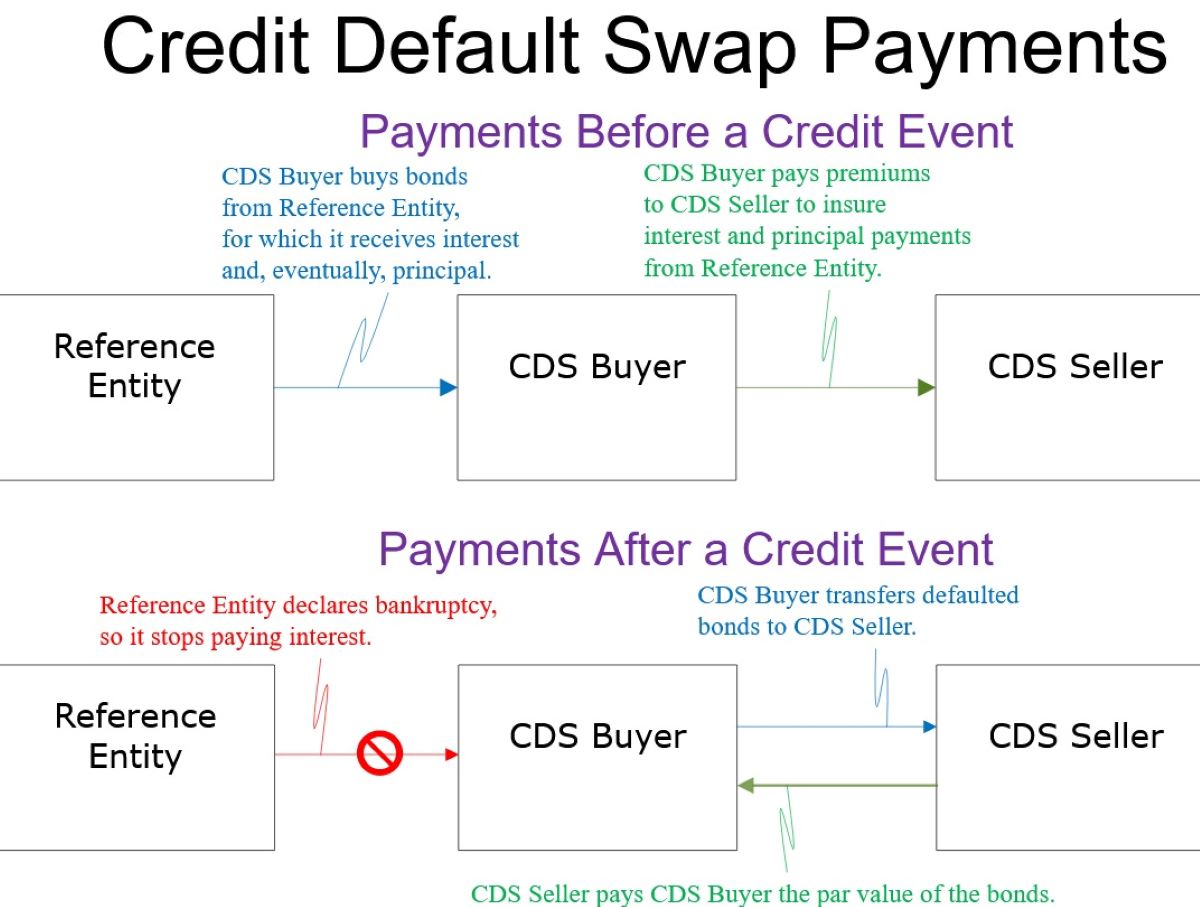Home>Finance>How Long Is The Grace Period For Direct Loans And FFEL Program Loans?


Finance
How Long Is The Grace Period For Direct Loans And FFEL Program Loans?
Published: February 19, 2024
Find out the grace period for Direct Loans and FFEL Program Loans. Understand the finance options available to you and plan your repayment strategy wisely.
(Many of the links in this article redirect to a specific reviewed product. Your purchase of these products through affiliate links helps to generate commission for LiveWell, at no extra cost. Learn more)
Table of Contents
Introduction
Understanding the Grace Period for Student Loans
As a college graduate, you’ve likely encountered the term “grace period” in relation to your student loans. It’s a crucial concept to grasp, as it directly impacts your financial planning and loan repayment strategy. Essentially, the grace period refers to the window of time after you graduate, leave school, or drop below half-time enrollment before you are required to commence repaying your student loans. This period serves as a transitional phase, allowing you to secure your financial footing before the burden of loan repayment sets in.
Understanding the specifics of your grace period is essential for making informed decisions about your finances. Whether you have Direct Loans or Federal Family Education Loan (FFEL) Program Loans, the grace period terms can differ, influencing the overall management of your student debt. In this article, we will delve into the nuances of grace periods for both Direct Loans and FFEL Program Loans, shedding light on the length of these periods and what occurs once the grace period concludes.
Understanding Grace Periods for Direct Loans
Direct Loans, which are issued by the U.S. Department of Education, offer a grace period to borrowers before they are obligated to start repaying their loans. This grace period typically begins the day after the borrower graduates, leaves school, or drops below half-time enrollment. It’s important to note that the duration of the grace period can vary depending on the type of Direct Loan.
For Direct Subsidized Loans, the grace period extends for six months. During this time, the federal government covers the accruing interest on the loan, providing borrowers with temporary relief as they transition into the workforce or further their education. On the other hand, Direct Unsubsidized Loans also grant a six-month grace period, but during this time, the interest continues to accumulate, albeit without the immediate pressure of repayment.
Direct PLUS Loans, which are available to graduate or professional students as well as parents of dependent undergraduate students, also offer a grace period. However, it’s important to note that the terms for Direct PLUS Loans differ slightly. While the standard grace period lasts for six months, it’s crucial to contact the loan servicer to confirm the specific details and any available options for repayment.
Understanding the nuances of the grace period for Direct Loans is pivotal for borrowers to effectively plan for loan repayment. Whether it’s taking advantage of the interest subsidy on Direct Subsidized Loans or exploring income-driven repayment plans, being well-informed about the grace period can empower borrowers to make sound financial decisions.
Understanding Grace Periods for FFEL Program Loans
For individuals with Federal Family Education Loan (FFEL) Program Loans, it’s essential to comprehend the intricacies of the grace period. Similar to Direct Loans, FFEL Program Loans offer a grace period to borrowers after they graduate, leave school, or drop below half-time enrollment. However, the specifics of the grace period for FFEL Program Loans differ from those of Direct Loans.
Upon meeting the criteria for the commencement of the grace period, which typically occurs after graduation or a change in enrollment status, borrowers of FFEL Program Loans are granted a six-month grace period. During this time, borrowers are not required to make payments on the principal of the loan, providing a buffer as they transition into the workforce or pursue further education.
It’s important to note that the interest that accrues during the grace period for FFEL Program Loans is the responsibility of the borrower. Unlike Direct Subsidized Loans, where the government covers the accruing interest during the grace period, FFEL Program Loans do not offer this interest subsidy. As a result, borrowers should be mindful of the accumulating interest and consider their options for managing it effectively.
Understanding the grace period for FFEL Program Loans is crucial for borrowers to navigate the post-education phase strategically. Whether it’s exploring loan consolidation, income-driven repayment plans, or other repayment options, being well-informed about the grace period terms empowers borrowers to make informed decisions about their loan repayment strategies.
Length of Grace Periods for Direct Loans and FFEL Program Loans
The grace period for both Direct Loans and Federal Family Education Loan (FFEL) Program Loans is a critical aspect of post-education financial planning. Understanding the duration of these grace periods is essential for borrowers to effectively manage their transition into loan repayment. Let’s delve into the specific lengths of the grace periods for Direct Loans and FFEL Program Loans.
- Direct Loans:
- FFEL Program Loans:
For Direct Subsidized Loans, the grace period spans six months, providing borrowers with a window of temporary relief as they embark on their post-education journey. During this period, the federal government covers the accruing interest on the loan, offering valuable financial respite to borrowers.
Direct Unsubsidized Loans also offer a grace period of six months. However, unlike the subsidized counterpart, the interest on unsubsidized loans continues to accrue during this period, albeit without the immediate pressure of repayment.
Direct PLUS Loans, available to graduate or professional students and parents of dependent undergraduate students, also offer a standard grace period of six months. It’s important for borrowers to communicate with their loan servicer to understand the specific terms and available options for repayment.
Similarly, FFEL Program Loans provide borrowers with a grace period of six months after graduation, leaving school, or dropping below half-time enrollment. During this period, borrowers are not obligated to make payments on the principal of the loan, allowing for a smoother transition into the workforce or further education.
Unlike Direct Subsidized Loans, FFEL Program Loans do not offer an interest subsidy during the grace period. As a result, borrowers should be mindful of the accruing interest and consider their options for effectively managing it.
Understanding the specific lengths of grace periods for Direct Loans and FFEL Program Loans empowers borrowers to make informed decisions about their loan repayment strategies. Whether it’s exploring income-driven repayment plans, loan consolidation, or other repayment options, being well-versed in the duration of the grace period is pivotal for effective financial planning.
What Happens After the Grace Period?
Once the grace period for student loans concludes, borrowers must be prepared to transition into the repayment phase. Understanding the subsequent steps and available options is crucial for effectively managing loan repayment. Let’s explore what occurs after the grace period for both Direct Loans and Federal Family Education Loan (FFEL) Program Loans.
- Direct Loans:
- FFEL Program Loans:
After the grace period for Direct Loans ends, borrowers are required to commence repaying the principal and any accrued interest. It’s essential to communicate with the loan servicer to determine the specific repayment terms and explore the available options. For borrowers facing financial challenges, income-driven repayment plans, loan consolidation, or deferment and forbearance options may provide relief.
Similarly, after the grace period for FFEL Program Loans concludes, borrowers enter the repayment phase. It’s vital for borrowers to assess the available repayment options and communicate with the loan servicer to chart out a suitable repayment strategy. Exploring income-driven repayment plans, loan consolidation, or deferment and forbearance options can offer flexibility in managing loan repayment.
It’s important for borrowers to be proactive in understanding the post-grace period requirements and options for loan repayment. Timely communication with the loan servicer and thorough research into the available repayment plans and assistance programs can significantly alleviate the burden of student loan repayment.
By staying informed about the transition from the grace period to loan repayment, borrowers can effectively navigate the complexities of managing their student debt, ensuring financial stability and peace of mind as they progress in their careers and personal lives.














